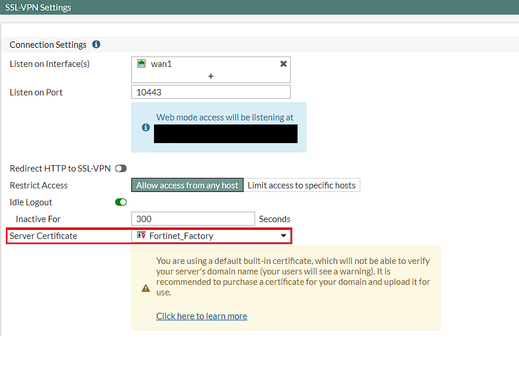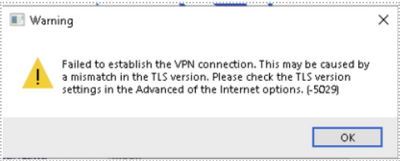- Support Forum
- Knowledge Base
- Customer Service
- Internal Article Nominations
- FortiGate
- FortiClient
- FortiADC
- FortiAIOps
- FortiAnalyzer
- FortiAP
- FortiAuthenticator
- FortiBridge
- FortiCache
- FortiCare Services
- FortiCarrier
- FortiCASB
- FortiConverter
- FortiCNP
- FortiDAST
- FortiData
- FortiDDoS
- FortiDB
- FortiDNS
- FortiDLP
- FortiDeceptor
- FortiDevice
- FortiDevSec
- FortiDirector
- FortiEdgeCloud
- FortiEDR
- FortiEndpoint
- FortiExtender
- FortiGate Cloud
- FortiGuard
- FortiGuest
- FortiHypervisor
- FortiInsight
- FortiIsolator
- FortiMail
- FortiManager
- FortiMonitor
- FortiNAC
- FortiNAC-F
- FortiNDR (on-premise)
- FortiNDRCloud
- FortiPAM
- FortiPhish
- FortiPortal
- FortiPresence
- FortiProxy
- FortiRecon
- FortiRecorder
- FortiSRA
- FortiSandbox
- FortiSASE
- FortiSASE Sovereign
- FortiScan
- FortiSIEM
- FortiSOAR
- FortiSwitch
- FortiTester
- FortiToken
- FortiVoice
- FortiWAN
- FortiWeb
- FortiAppSec Cloud
- Lacework
- Wireless Controller
- RMA Information and Announcements
- FortiCloud Products
- ZTNA
- 4D Documents
- Customer Service
- Community Groups
- Blogs
- Fortinet Community
- Knowledge Base
- FortiGate
- Troubleshooting Tip: FortiClient TLS 'error 5029':...
- Subscribe to RSS Feed
- Mark as New
- Mark as Read
- Bookmark
- Subscribe
- Printer Friendly Page
- Report Inappropriate Content
Created on
05-11-2020
01:36 AM
Edited on
02-11-2025
10:26 PM
By
![]() Anthony_E
Anthony_E
Description
This article describes how to rectify the 'failed to establish the VPN connection', and '5029 error'.
Scope
FortiGate.
Solution
While connecting the FortiClient, the following error may appear.
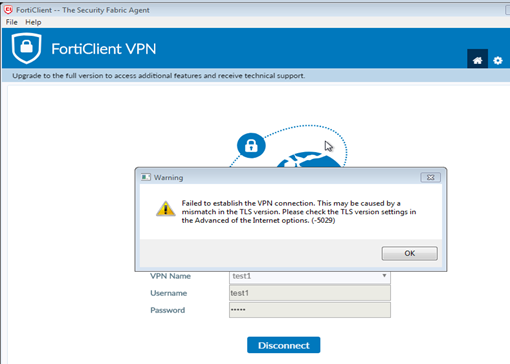
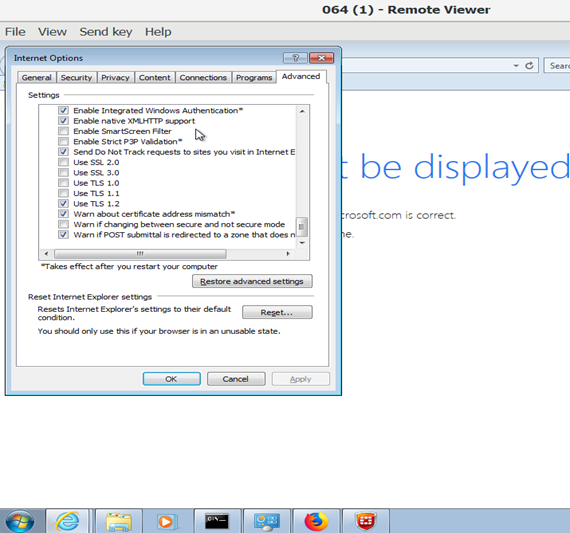
config vpn ssl settings
set reqclientcert disable
set ssl-max-proto-ver tls1-1
set ssl-min-proto-ver tls1-0
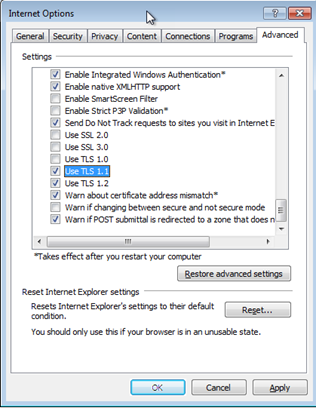
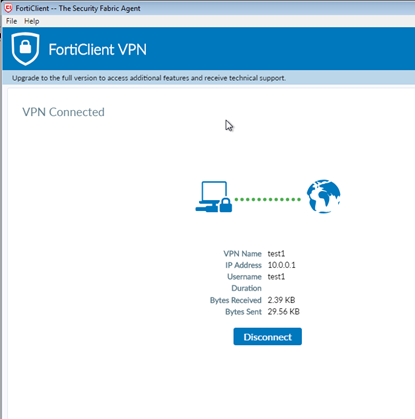
SSLVPN Associated Interface:
When SSL VPN is listening on multiple interfaces, ensure the User/Group is mapped to the required interfaces:
config vpn ssl settings
config authentication-rule
edit 1
set source-interface "port7"
set source-address "US"
set users "sslsplit"
set portal "tunnel-access"
next
edit 2
set source-interface "port8"
set source-address "US"
set groups "ZTNA_Machine_Auth"
set portal "full-access"
next
end
In this example, the user 'sslsplit' will fail to connect to the portal 'tunnel-access' if attempting to connect via the second interface port8 as there is no mapping for port8 for this user.
Server Certificate:
If all steps have been followed by and still getting the same error to connect, make sure to check the server certificate is set and not empty. This can be verified under SSL-VPN Setting -> Server.
Certificate: change it accordingly.
After the certificate has been set, it will be possible to connect to SSL-VPN.
Another possible reason for this error, if the above steps did not help, is if FortiGate uses a self-signed certificate as an SSL VPN server certificate and there is another firewall in between which performs certificate inspection.
In the following packet capture, the client sent an alert (Level: Fatal, Description: Illegal Parameter) after the 'Certificate, Server key Exchange, Server Hello Done'.

The solution is to either:
- Disable certificate inspection on intermediary firewall/s.
- Use a trusted certificate signed by a public certificate authority for the SSL VPN server certificate on the FortiGate.
The Fortinet Security Fabric brings together the concepts of convergence and consolidation to provide comprehensive cybersecurity protection for all users, devices, and applications and across all network edges.
Copyright 2025 Fortinet, Inc. All Rights Reserved.
